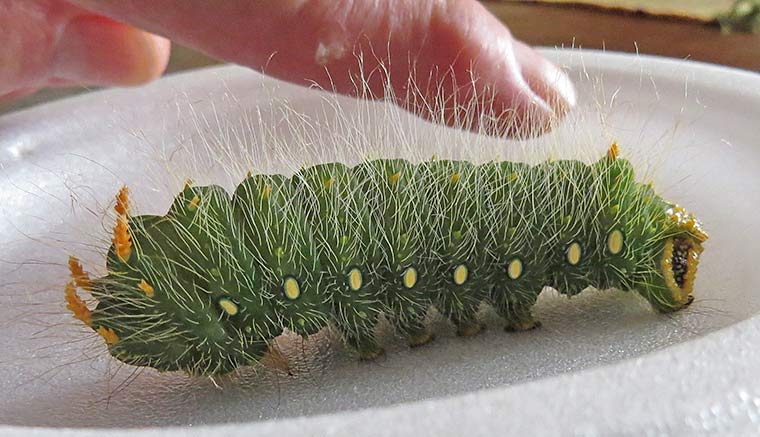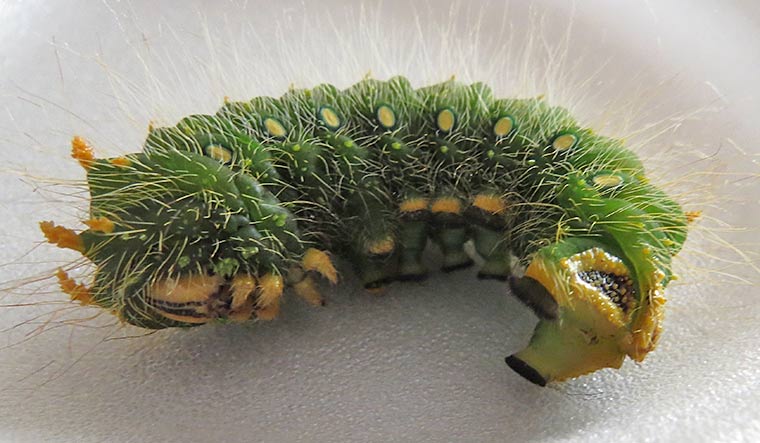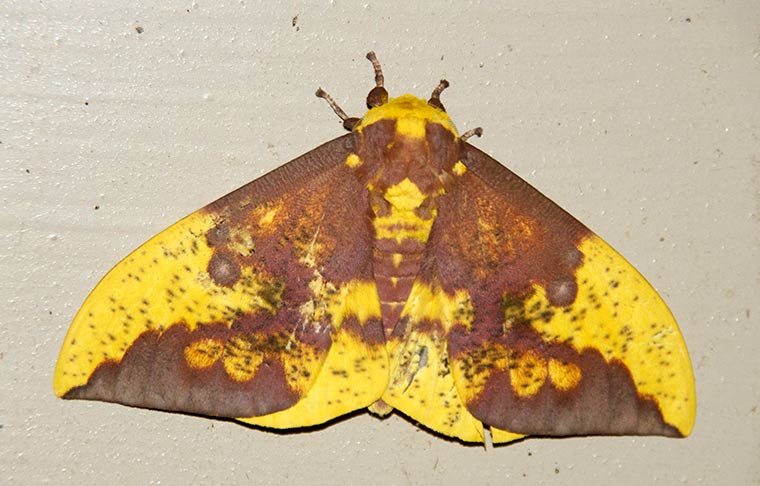My brother Charlie, who lives in Indiana, found this big caterpillar crawling around in his back yard. It is the larva of the Imperial Moth (Eacles imperialis). It was probably looking for some soft ground, because this species digs a burrow and overwinters as a pupa underground. Charlie brought the caterpillar inside, and his wife Linda took this picture and was nice enough to send me a copy.
Caterpillars of this species have two basic color forms, a black/orange form and the green/yellow form shown in the picture. Caterpillars, like all insects, have six legs, but they have extra structures called prolegs that aid in moving about. In the photograph above, the four pairs of prolegs can be seen under the middle of the body. The large anal proleg can be seen at the rear. Just above the anal proleg is a piece of armor plating surrounded by a yellow rim.
The prominent white dots along the side are the location of the spiracles. Spiracles are pores through the impermeable exoskeleton that allow air (and oxygen) to diffuse into the interior of the animal. Spiracles can be opened and closed as the need arises. This diffusion-based breathing system limits the maximum size of insects. The very large insects depicted in some science fiction movies are impossible, because air could not diffuse into them fast enough to support activity.
The next photograph shows the yellow head with black stripes and six true legs just behind it. The true legs are yellow and covered with short hairs. The single anal proleg and the armor plate can be seen at the rear of the body.
This past August, I was able to photograph an adult Imperial Moth which was attracted to our moth sheet. This is one of the giant silk moths; the family includes the Luna Moth, the Polyphemus Moth, the Io Moth and other spectacular large moths. This one has a wingspread of about 3 inches. Adult Imperial Moths have no functioning mouth parts and do not feed. Their only purpose is to mate and produce eggs.



